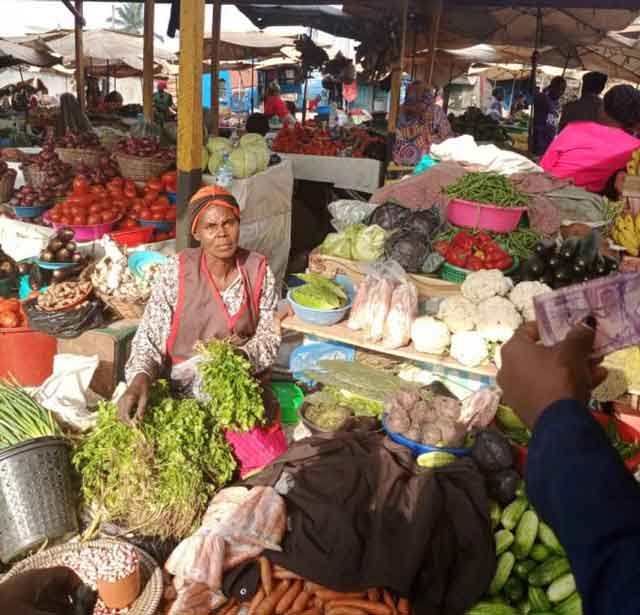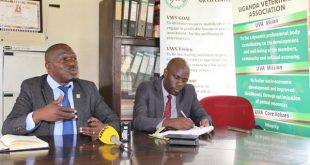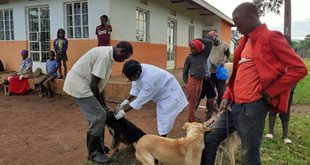
Kampala, Uganda | THE INDEPENDENT With her one-year-old baby stuck on the breast, Ritah Nakamya rises from a wooden stool behind her tomatoes, carrots and onions stall, to attend to me. Nakamya is one of the vendors in Kalerwe, an often crowded fresh foods market in Kampala.
She only returned to work in July, after the market was closed in March, for Uganda’s first COVID-19 lockdown. Before I approached her stall, Nakamya had been doing an interview with a group of researchers on how she was safeguarding against COVID-19.
In Kampala, infections are rising. In just two weeks, eleven people in the city have died of the disease. But despite the rising cases, Nakamya doubts that the disease exists. She only searches her bag for a mask after I ask her about COVID-19. When we agree that I will not record our conversation, she loosens up again.
“If COVID- 19 was here, we would all be sick or dead. See? No one has a mask on,” she says pointing to dozens scrambling to buy pineapples from a truck parked across the road. “It’s very inconveniencing. I can’t breathe with this thing on,” she adds.
She believes that the researchers and journalists who come around, asking questions, are only looking for reasons to justify another lockdown that would hurt her livelihood. Nakamya is unaware that research puts her among the most at risk for COVID-19.
Dr Salome Okware, an epidemiologist and member of the National COVID-19 task force tells URN that an on-going random assessment survey, done after the July re-opening established that market vendors are highly at risk, given their level of interaction with various people. Infections have risen 10 times between this assessment and the first one done in May.
In terms of percentages, the scientist says that infections rates among about 20,000 people including security operatives, health workers, truck drivers, market vendors and fisherfolks in the high-risk districts sampled were at 0.016 per cent, in May. But now, she puts them at 0.13 per cent and predicts this might increase as the assessment goes on.
The national coronavirus lockdown was instituted in March but has since been gradually lifted leaving only schools, worship houses and the airport still under lockdown.
But barely a month after the reopening of most businesses, infections in Kampala are going up. In addition to registering the majority of cases over the last five days, the city has also had the majority infections picked mainly from alerts and don’t have a clear line of transmission.
For instance, on Monday, from the 28 alerts testing positive, 15 were from Kampala, yet on Sunday at least 30 of the 53 alerts were from Kampala still. This spike is baffling scientists and healthcare managers on how to intervene in countering transmission among the likes of market vendors who remain unbothered. Nakamya’s declaration shows just how tough it is to design a suiting intervention.
Prof Nelson Sewankambo, the Director of THRiVE consortium, a Health Research group told URN that prevention guidelines like the lockdown were drastic and not tested in the country and this may make repeating them difficult or ineffective.
THRiVE Consortium is embarking on a study to establish why people cannot respect guidelines and Standard Operating Procedures (SOPs) instituted by the government and suggest responses that can yield better compliance from the public.
The THRiVE team’s study is not the only one trying to identify a Ugandan response to COVID-19. The Makerere University Research and Innovations Fund, an entity put in place by the government to coordinate research that informs public policy, has put everything else on hold to focus on COVID-19. 30 billion Shillings has also been set aside to facilitate COVID-19 research.
Prof. William Bazeyo, who heads the Fund says Uganda will have homegrown solutions in the next three months as several studies are in the offing. Some, like the one which is testing the use of plasma for previously affected COVID-19 people to treat new infections, are strictly medical.
Others are responding to the social dimensions of the epidemic. For example, Bazeyo says, a study exploring how schools and busy business places like Kikuubo can continue working safely in the wake of the second wave of infections, is underway.
Such studies are important because, as the Health Minister, Dr Jane Ruth Aceng says, the government is baffled by the poor uptake as measures to control COVID-19, yet they were informed by thorough counsel from scientists and blended this with a strong communication campaign which involved using a mix of socialites, scientists and politicians to urge people on how to safeguard themselves.
Some officials have hinted on the fact that this complacency could push Uganda into another lockdown and other countries have indeed reinstituted lockdowns with a rebound of injections. But, this is not yet an option they are considering here.
Aceng said the lifting of the lockdown was a request by the people that they risked doing even as they knew infections will shoot up.
A mathematical modelling study undertaken by Makerere University department of Mathematics released in June had informed them that lifting the lockdown early on would cause a surge of infections by August, to as much as 10,000 people testing positive.
Prof Joseph Mugisha, who was the first to mathematically model how Uganda’s Pandemic is likely to turn out said the study showed them that the second wave of infections starting in Uganda could have been avoided if the total lockdown was delayed to October and people strictly adhered to Standard Operating Procedures of hand washing or sanitizing, wearing a mask and maintaining the recommended physical distancing.
But, Aceng said they had to weigh in a lot of factors but mostly the risk to health versus the economic injury keeping people away can create. She says they thought that people would be vigilant enough to take the prevention directives seriously.
We spoke to a behaviour scientist to explain why aggressive public health campaigns didn’t have a lasting effect. This is according to Dr Joseph Matovu a behavioural scientist and senior research associate at the School of Public Health.
He says when people’s opinion on the public health interventions is not sought, they tend to comply initially, while in shock, but soon fall back especially as doubts start kicking in.
By Monday, a total of 325,637 samples had been tested for COVID-19 whereby 1,560 have been confirmed positive to date. However, of the positives, 1,165 have recovered and have since been discharged from the various treatment centres where they had been isolated for care.
This report was supported by the Africa Women Journalism Project (AWJP) in partnership with the International Center for Journalists (ICFJ).
********
URN
 The Independent Uganda: You get the Truth we Pay the Price
The Independent Uganda: You get the Truth we Pay the Price


